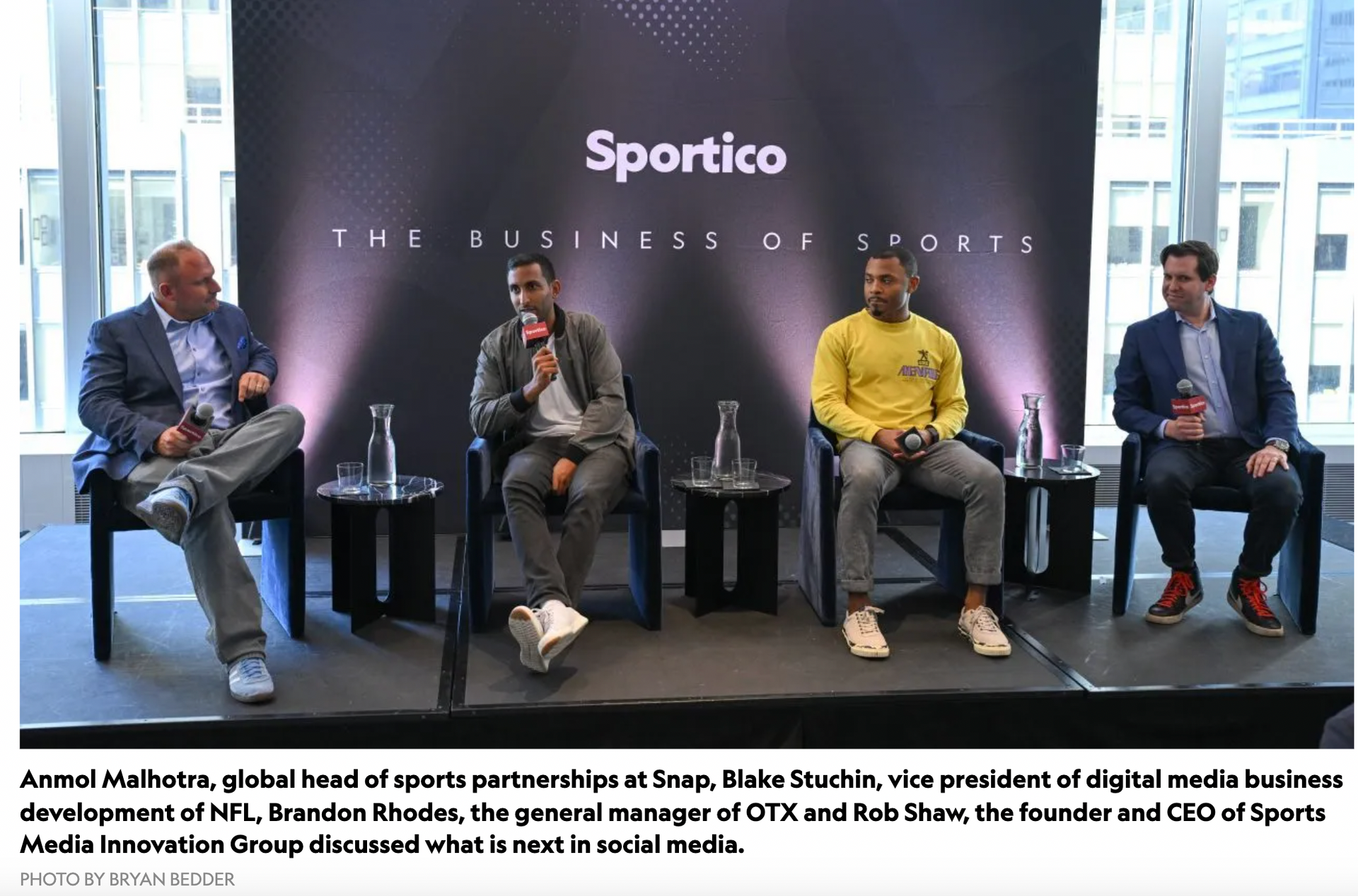Sportico Converge: How Sports Companies Use Social Media
This is a subtitle for your new post

Great conversation with my friends Snap’s Anmol Malhotra, NFL’s Blake Stuchin, and Overtime’s Brandon Rhodes at the Sportico Converge Conference last Thursday in New York City.
Social media elicits a strong reaction from people - some point to it being responsible for some of society’s ills, others point to it as a brainless way younger people spend time. The fact is that it's how younger generations gather news and learn, share experiences with friends and family, and engage with their favorite hobbies and pastimes.
The NFL and Overtime represented on the stage at Converge illustrates the wide range of how publishers use social media. The NFL is strategic on social platforms as a way to maintain relevance with younger audiences and grow its fandom around the globe. Overtime, meanwhile, is a new age media company that uses social media to build its audience, and leverages a diversified business model including merchandise, advertising, and live events to drive revenue. Both companies are extremely successful, though the NFL is heavily reliant on the broadcast business using social media to prepare for the future, while Overtime has built its core business on top of social platforms.
2023 has been a pivotal year for both the NFL and Overtime on social platforms. If not for the NFL’s long-term investments on digital platforms, they likely would have never been in a position to agree to a multibillion dollar deal with Google this winter to bring Sunday Ticket and Red Zone to YouTube and YouTube TV. Meanwhile, Overtime continues to grow by developing its own IP. Just a few years after launching the basketball league Overtime Elite, they have launched a football league with OT7 and most recently boxing with OTX, the brainchild of Brandon Rhodes.
The social platforms including Snap continue to innovate to find new ways for people to engage on their apps. Anmol talked about how there is a growing creator economy that encourages the most talented story-tellers to continue to turn to Snap to grow their businesses and broaden its audiences by leveraging the camera and Snap’s AR publisher tools.
Social media platforms can be very frustrating for its partners with premium IP since they refuse to play by the same business model as the traditional media companies such as broadcasters. Simply put, premium IP is not as valuable for social media companies and for that reason they largely do not believe in media rights fees. If one of the largest leagues or media companies opted to stop posting to social platforms, you wouldn’t see much of an impact at all. That’s because the very nature of a feed-based video platform minimizes the value of an individual publisher. Furthermore, most of the content on these platforms is created by the fans themselves. It explains why companies such as Meta don’t hesitate to threaten to turn off hosting news publishers when legislation they deem unfair is considered in nations such as Australia or Canada.
Of course, you won’t see the biggest sports leagues and media companies stop posting on these platforms because studies have shown that 90% of GenZ and younger people spend their video time on these platforms. Thereby, Facebook, Instagram, Snap, TikTok, and X have replaced NBC, FOX, CBS, and ABC as the free to air video destinations of a generation.
Sportico’s Converge conference gave us a glimpse at how the NFL, Overtime, and Snap program to these audiences while driving its business objectives. It’s an important topic to keep an eye on as younger generations spend more time on the platforms and the technology companies continue to innovate and evolve.


